Off To The Petersen January 29th, 2013
Great places to allow your mind to expand
A Day Off From Golf Thanks To Hand Surgery

We decided to go to the LA Farmers Market before lunch

Big scar with 24 stitches so no golf for a week

A fantastic place to dine....

French food can be pretty darn good
The Petersen Is About Six Blocks Away From The LA Farmers Market
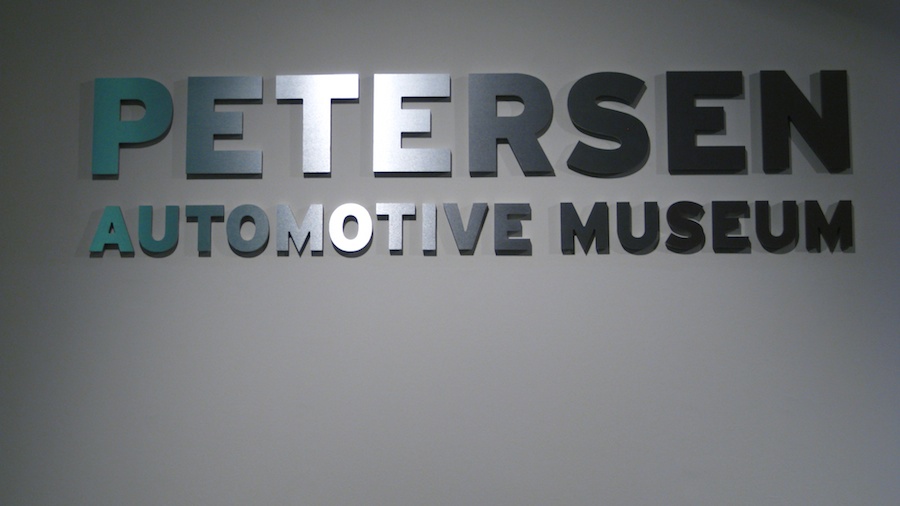
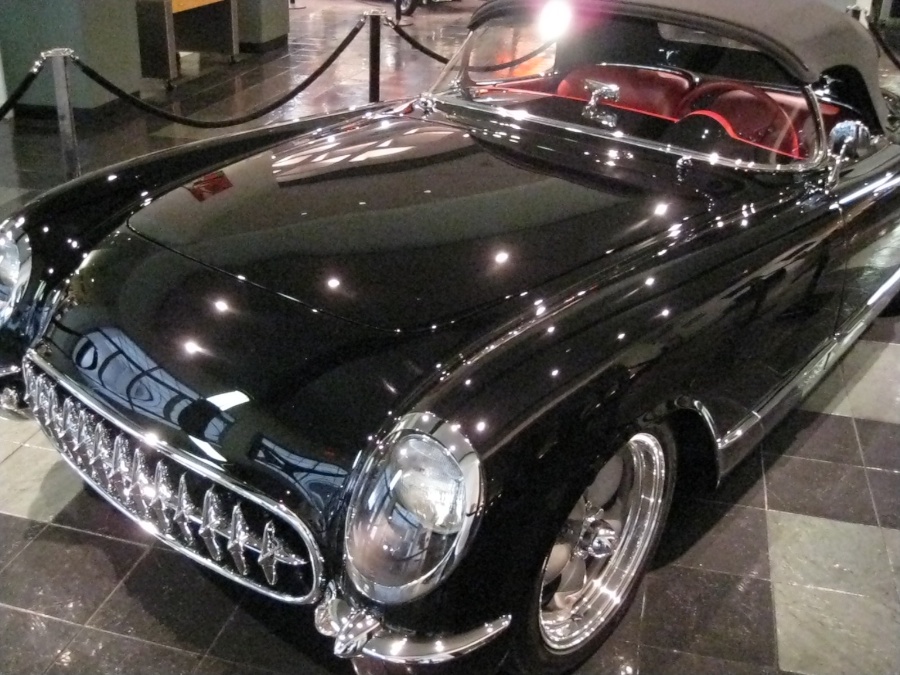
1957 black Corvette
Did You Know? - The going price for one of these in good condition is $70,000!
The Chevrolet Corvette (C1) is the first generation of the sports car by the Chevrolet division of General Motors introduced late in the 1953 model year and produced through 1962. It is commonly referred to as the "solid-axle" generation, as the independent rear suspension did not appear until the 1963 Sting Ray.
The Corvette was rushed into production for its debut model year to capitalize on the enthusiastic public reaction to the concept vehicle, but expectations for the new model were largely unfulfilled.[4] Reviews were mixed and sales fell far short of expectations through the car's early years. The program was nearly canceled, but Chevrolet would ultimately stay the course and Harley Earl and company would transform the Corvette into a true world-class sports car.
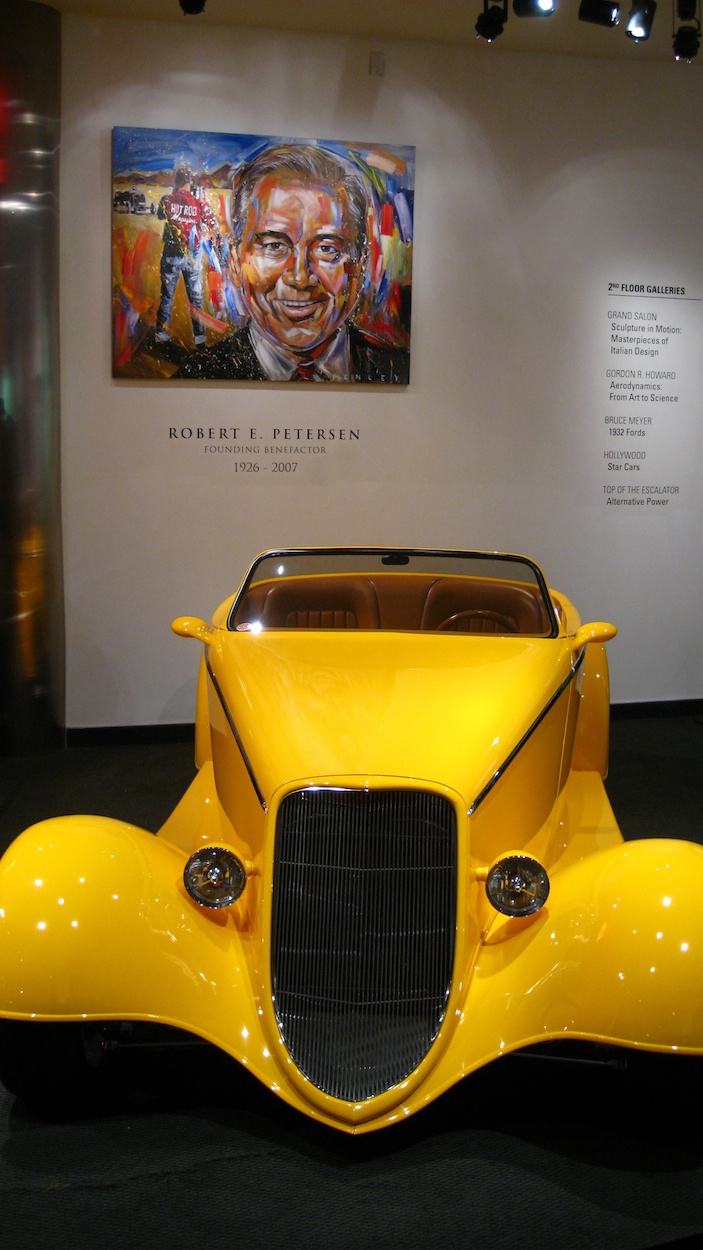
Yes... It's basically a 1932 Ford... A beauty!
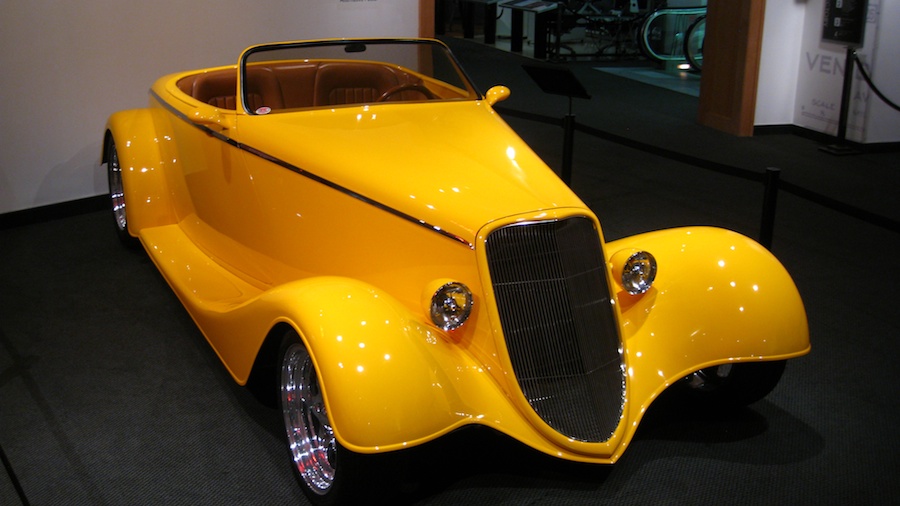
Just plain cool...
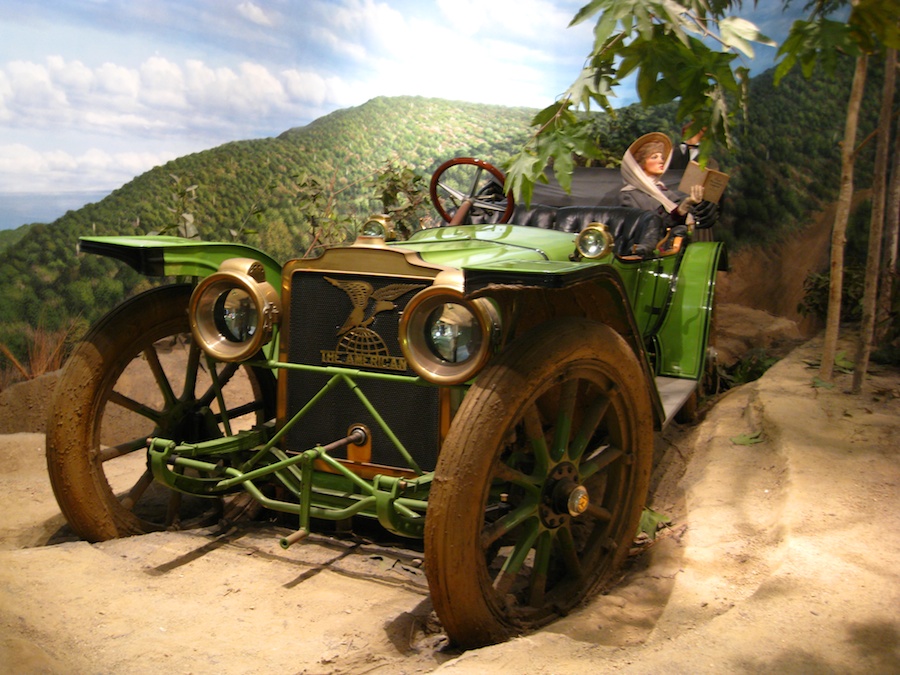
More out style... See the crank??
Did You Know? - Ransom Eli Olds (1864-1950) built the first automobile factory in 1899 in Detroit, Michigan, to manufacture his Oldsmobile. Over 10 vehicles a week were produced there by April 1901 (433 in 1901; 2,500 in 1902; and 5,508 in 1904). In 1906, there were 125 companies making automobiles in the United States.
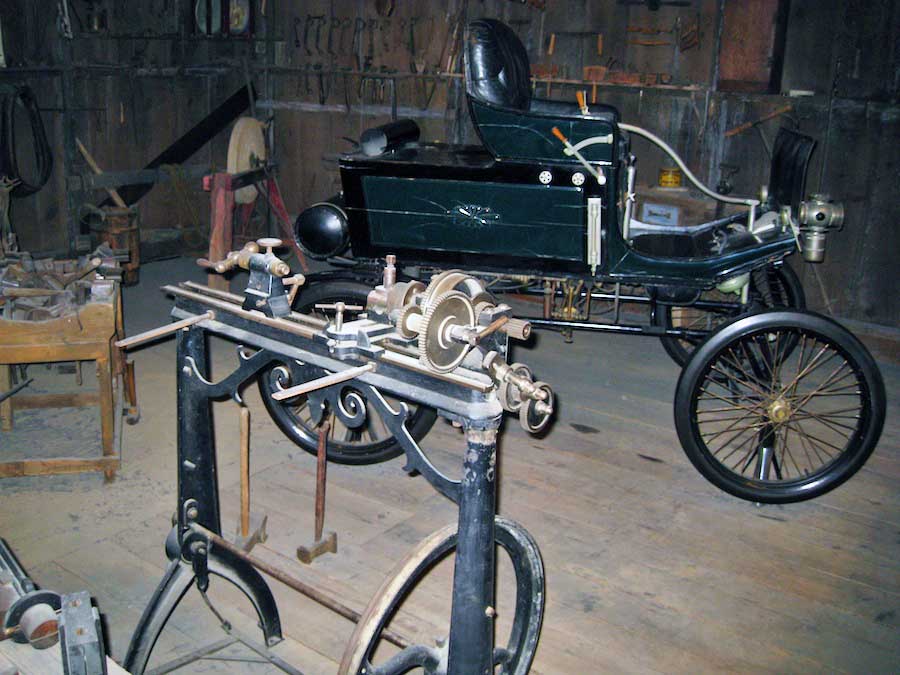
Built in a wood shop
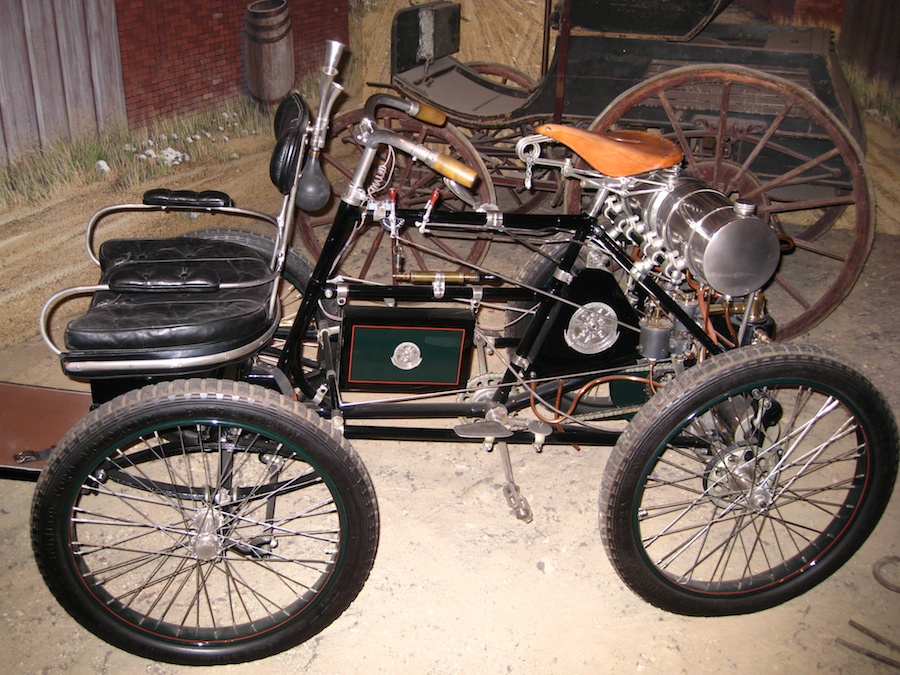
Quadracycle?

Did You Know? - The Ford Quadricycle was the first vehicle developed by Henry Ford. Ford's first car was a simple frame with an ethanol-powered engine and four bicycle wheels mounted on it.
The earliest cars were hand built, one by one, and very expensive. The peculiar machines were seen as toys for the rich. In the 1890s, the "horseless carriage" was a relatively new idea, with no one having a fixed, universal idea of what a car should look like or how it should work. Most of the first car builders were inventors, rather than businessmen, working with their imaginations and the parts they had on hand. Thus, the invention of the Quadricycle marks an important innovation as a proto-automobile that would lay the foundation for future, more practical designs to follow.
On June 4, 1896 in a tiny workshop behind his home on 58 Bagley Street, Ford put the finishing touches on his pure ethanol-powered motor car. After more than two years of experimentation, Ford, at the age of 32, had completed his first experimental automobile. He dubbed his creation the "Quadricycle," so named because it ran on four bicycle tires, and/or because of the means through which the engine drove the back wheels. The success of the little vehicle led to the founding of the Henry Ford Company and then later the Ford Motor Company in 1903.

Have you seen the movie???
Did You Know? - In part, the Model T's popularity on the big screen comes because the car and the medium emerged at approximately the same time 100 years ago â€" and both became very popular almost overnight.
"The Model T was the 'it' car of the 1920s. It was the best selling vehicle at the time. and everyone in Hollywood and beyond wanted one." said Alessandro Uzielli, head of Ford's Brand Entertainment division.
As the first moviemakers moved beyond static interior shots to the outdoors, it was only natural to capture the motion and movement created by the car. In that way, Hollywood reflected the changes brought on by the automobile and mass migration to cities.
While the Model T appears in the short films of such early Hollywood comedians as Keaton and Lloyd, it was the laugh-out-loud lunacy of Stan Laurel and Oliver Hardy that made the Model T a featured player.
In one of the last and funniest silent-era films, "Big Business," (1929) Laurel and Hardy are selling Christmas trees out of the back of a Model T truck. When a cranky neighbor rejects their pitch and the tree is damaged, the pair takes it out on the man's house as he inflicts reciprocal destruction on their vehicle.
A "Perfect Day," (1929) Laurel and Hardy's third talkie, features several gags on-board a Model T. When Ollie asks Stan to "throw out the clutch," he reaches down and does just that. In the end, the car drives into a puddle that swallows the pair, their passengers and the car.
In "Hog Wild," (1930) Hardy climbs a ladder mounted on Laurel's Model T to install a radio antenna and Laurel accidentally drives off with Hardy still clinging to the ladder. In the finale, the car gets crushed between two streetcars like an accordion â€" and ironically, seems to run better for it.
Another gimmick Model T was used in the duo's 1928 silent hit, "Two Tars." In that short film, Laurel and Hardy create havoc in a traffic jam and then escape in their Model T into a railroad tunnel. The resulting unseen collision with a train causes them to emerge in a roadster that's been squashed sideways â€" but still runs, of course.
The first Model T Ford to come out of production in 1908 , it was the first mass produced car of it's time .Over 15 million cars were produced in 19 years .It had the nickname of the 'Tin Lizzie 'The 1908 model T Ford cost $1000 , in 1927 the cost was only $300 due to the increased numbers available thanks to the workforce turning a Model T out every 93 minutes !
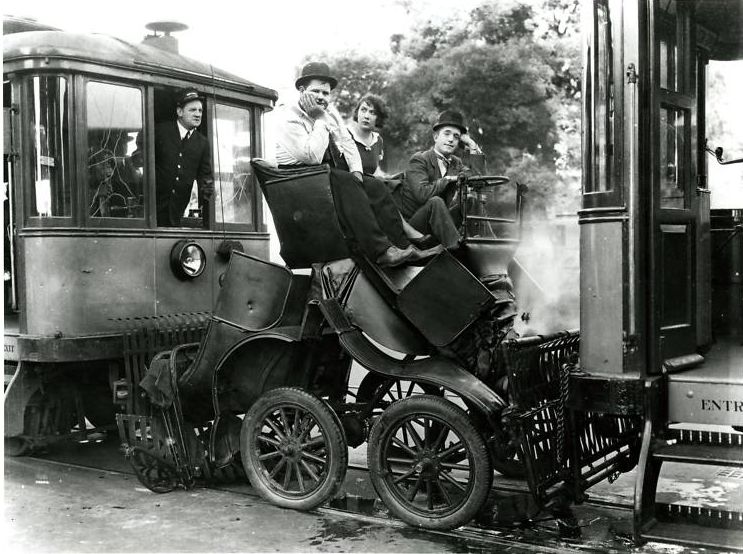
Scene from the movie
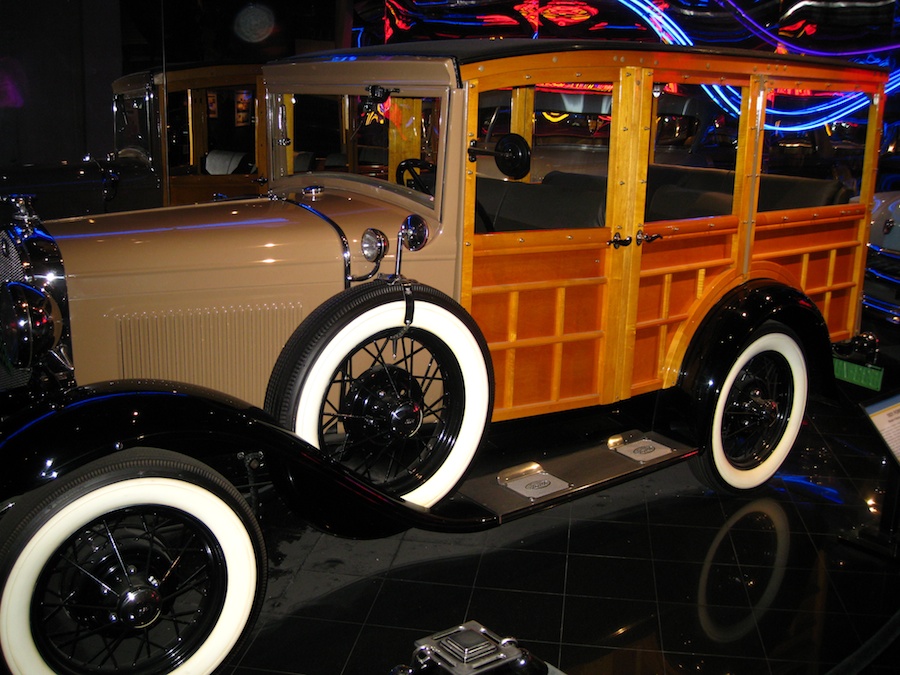
Woody's galore
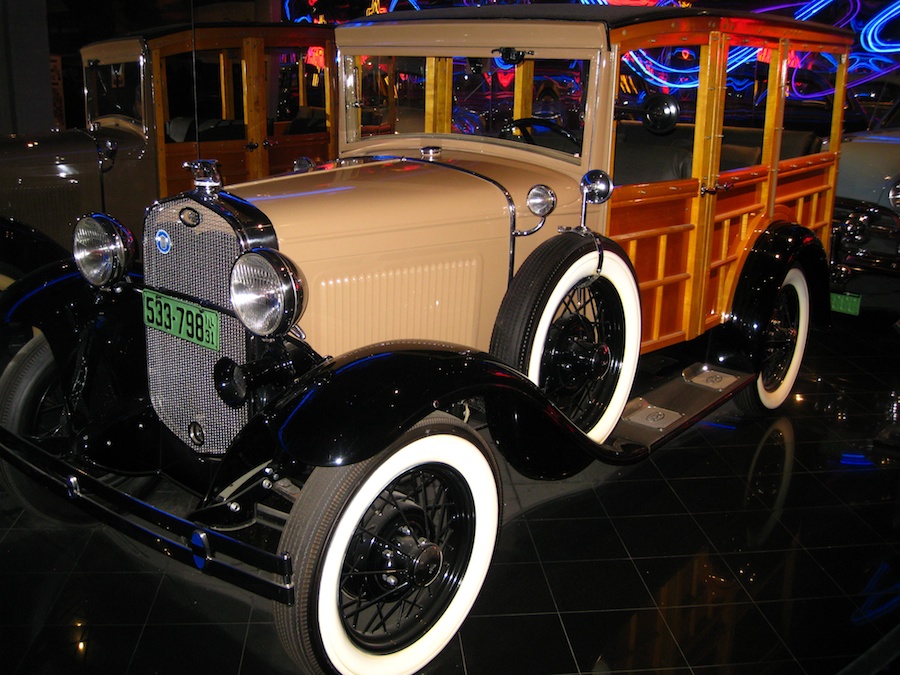
Magnificent restoration
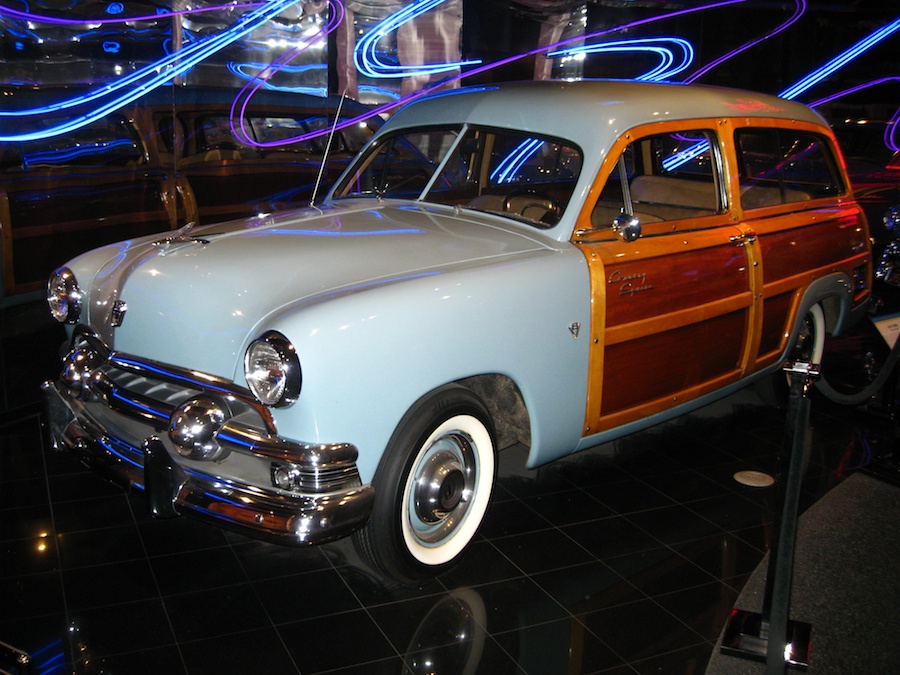
1953 Ford... Like Del's (our next-door neighbor)
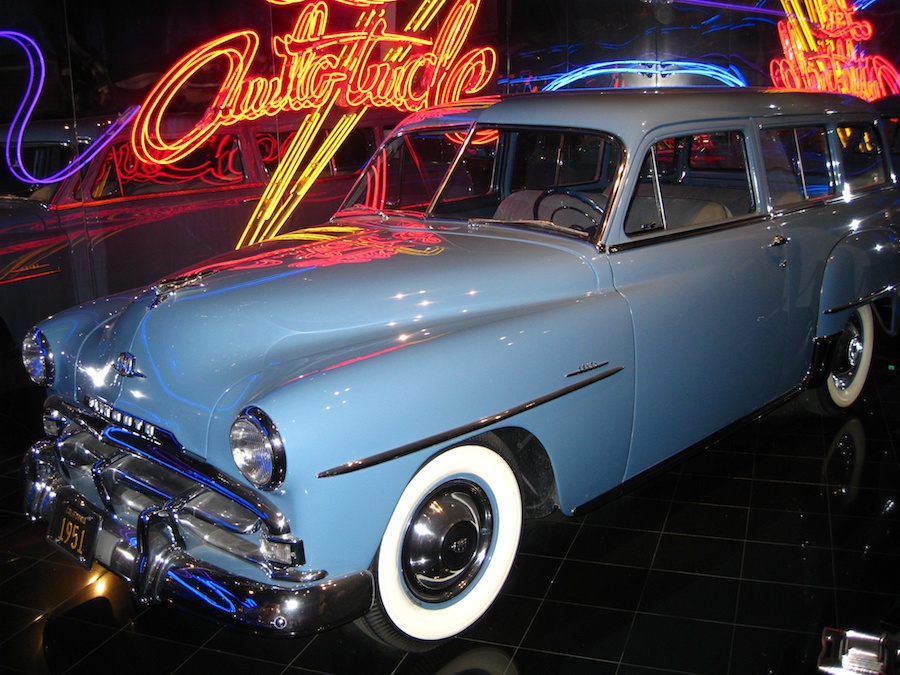
1953 Plymouth
Did You Know? - The year 1953 marked Plymouth's (and DeSoto's) twenty-fifth anniversary, but the company chose not to mention its silver anniversary when the new cars made their public debut November 20, 1952. For Plymouth, there would not even be a special model to commemorate the occasion. This decision may have been made easier by the fact both Buick and Ford were celebrating their fiftieth anniversaries in 1953.
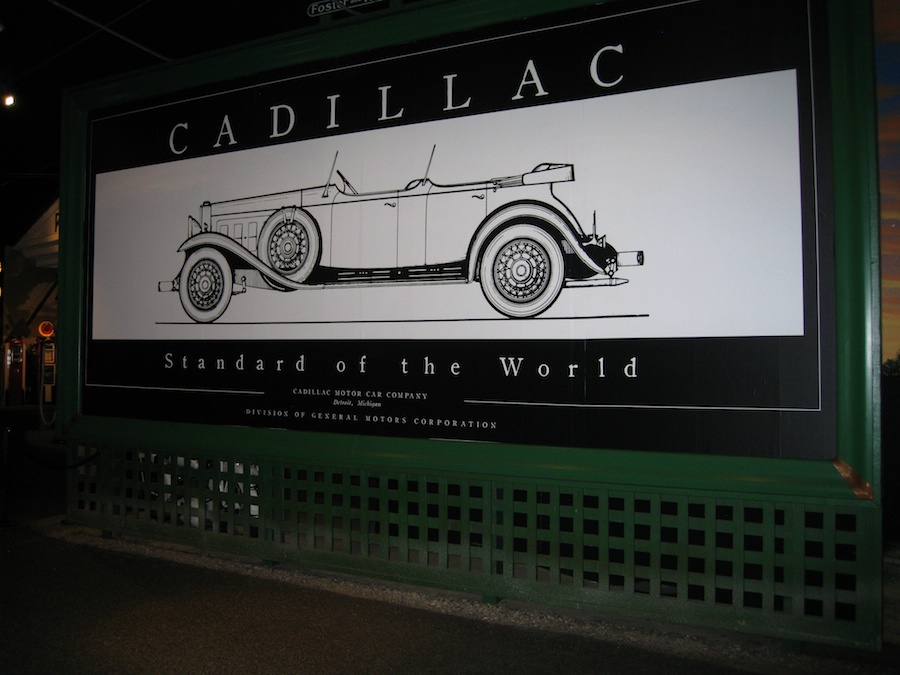
It was once upon a time... Who is behind the sign?

Dang... It's Del
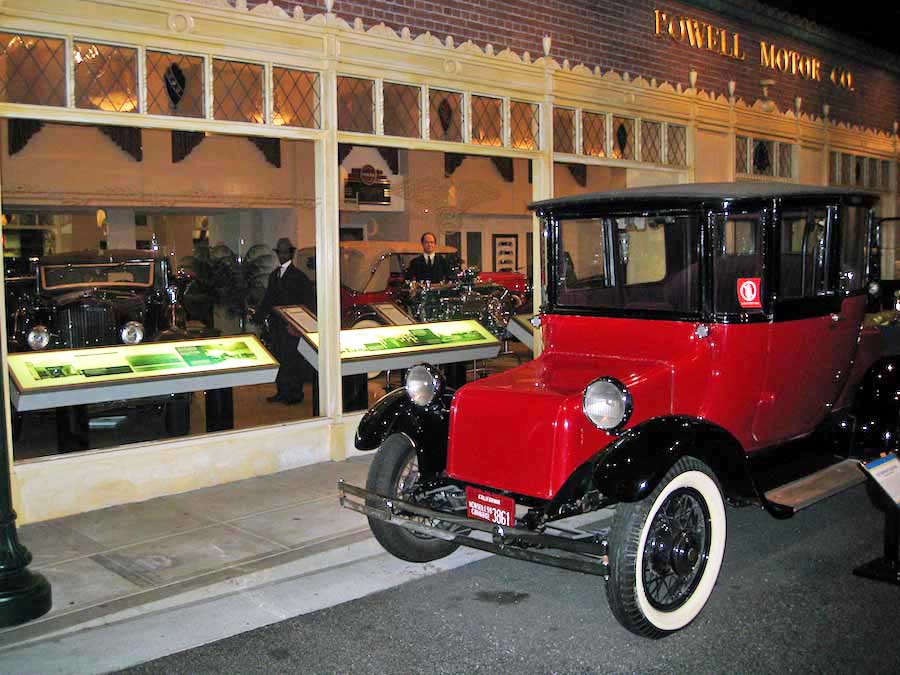
The old showrooms were works of art
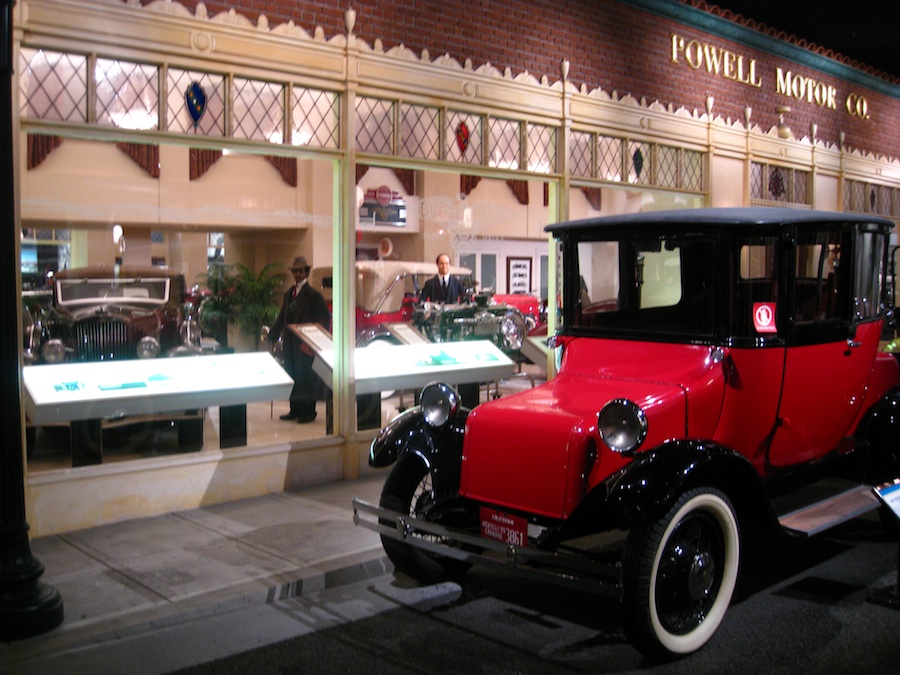
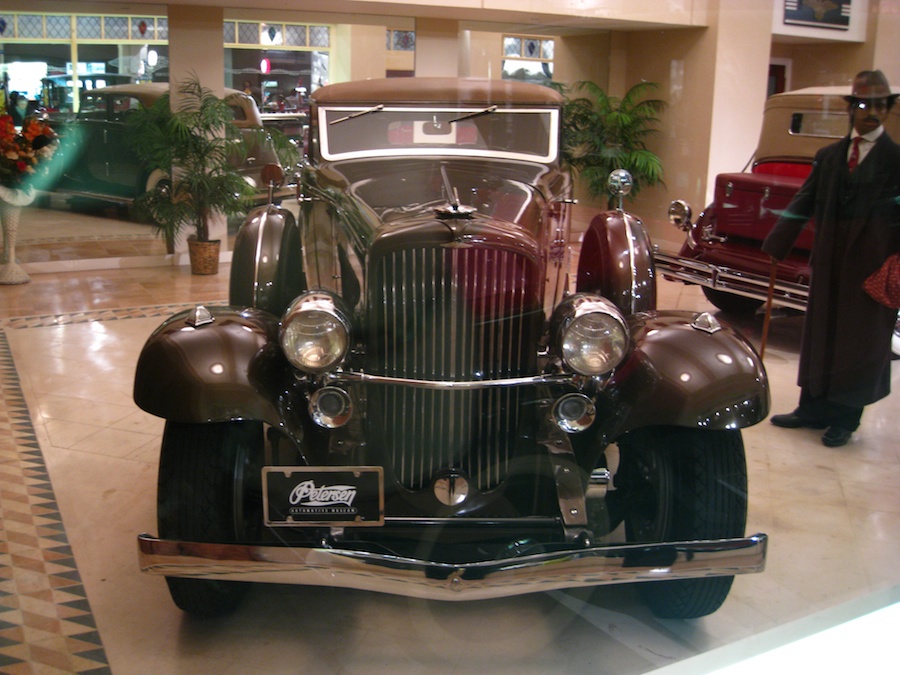
Duesenberg... What else would be so elegant?
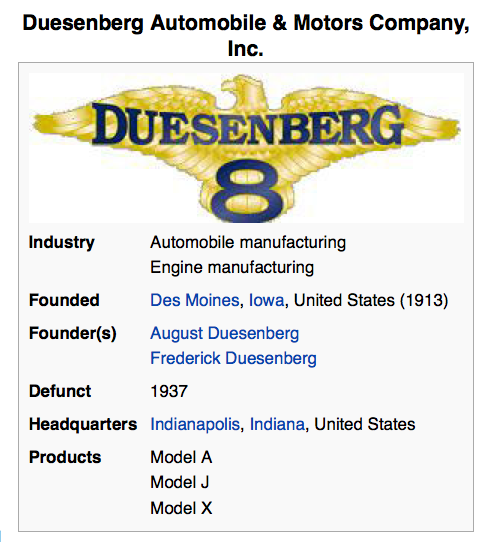
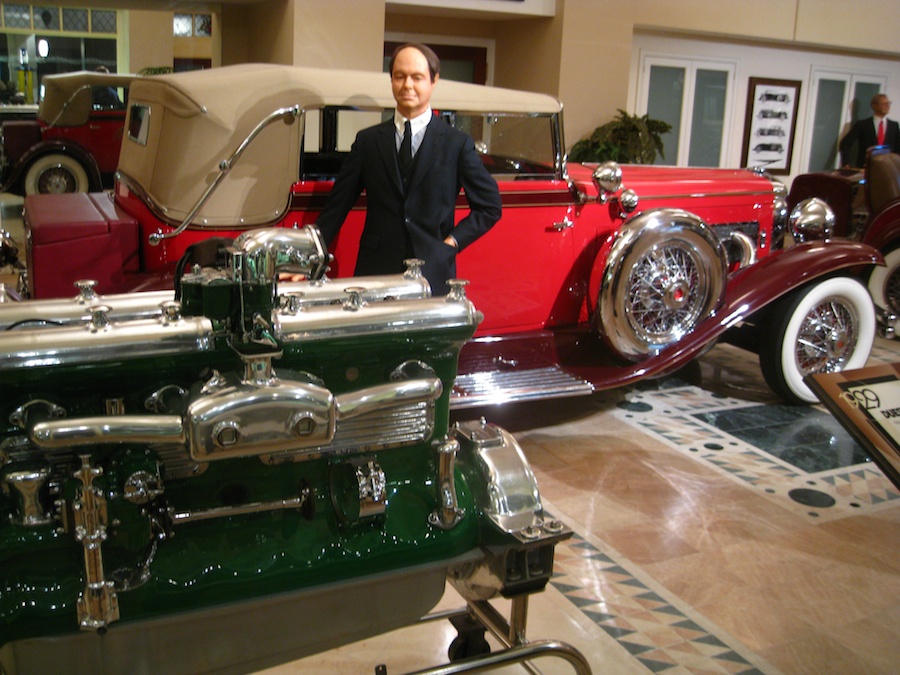
The engines were quite amazing... As large as 420 cubic inches
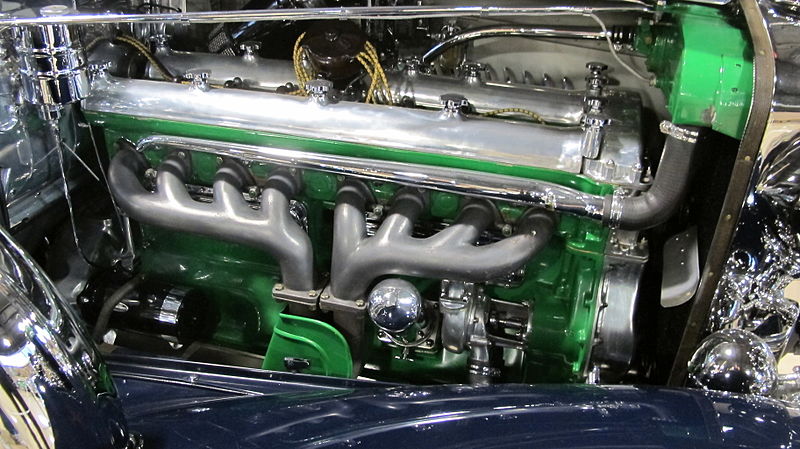
All iron!
Did You Know? - In the showrooms, as it was custom among the luxury car brands, only the chassis and engine were displayed, since the interior and body of the car would be custom-made by an experienced coachbuilder to the owner's specifications.
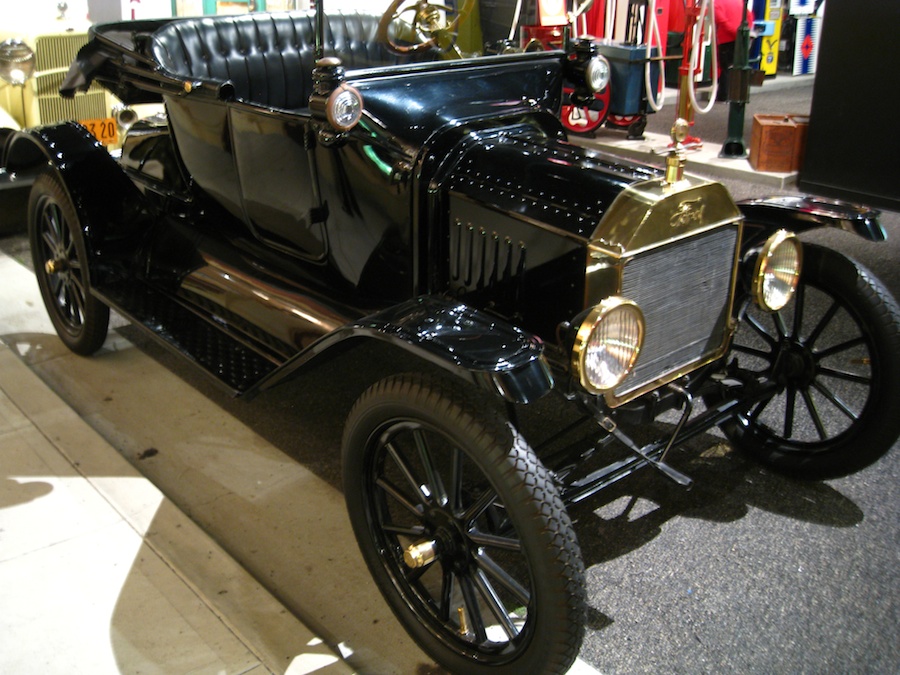
More our style... And what we could afford... Pun intended
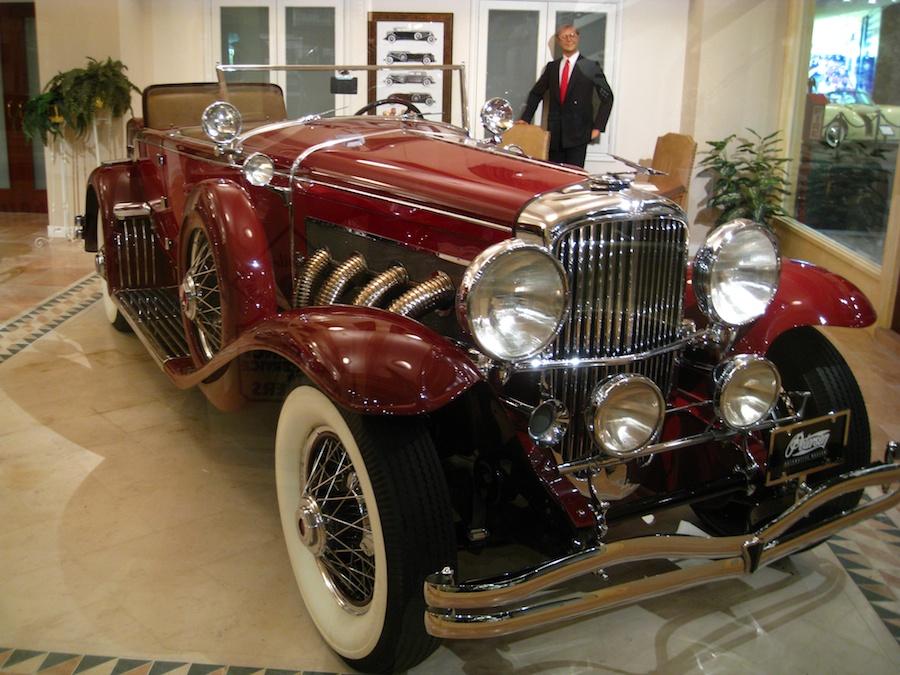
A marvel of engineering
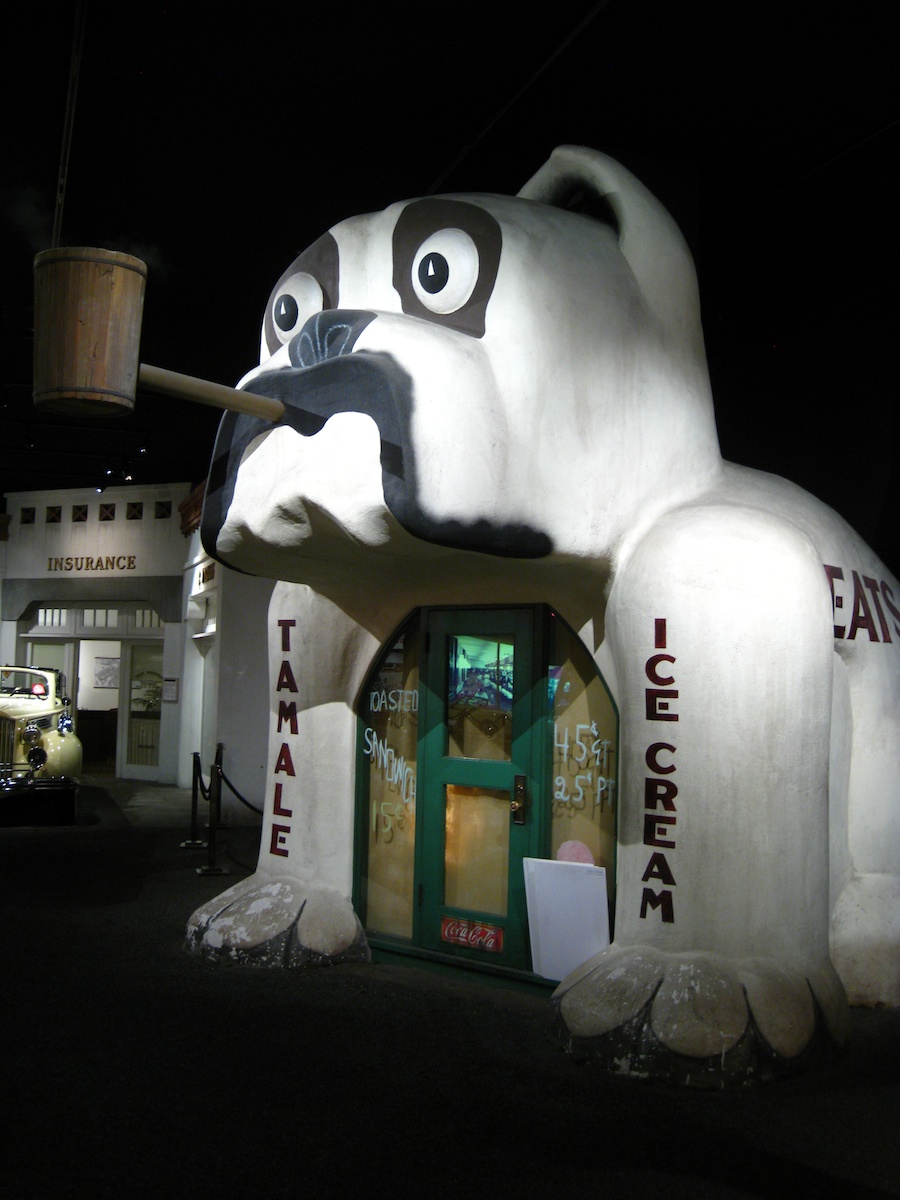
The original used to be on Washington Boulevard in Culver City
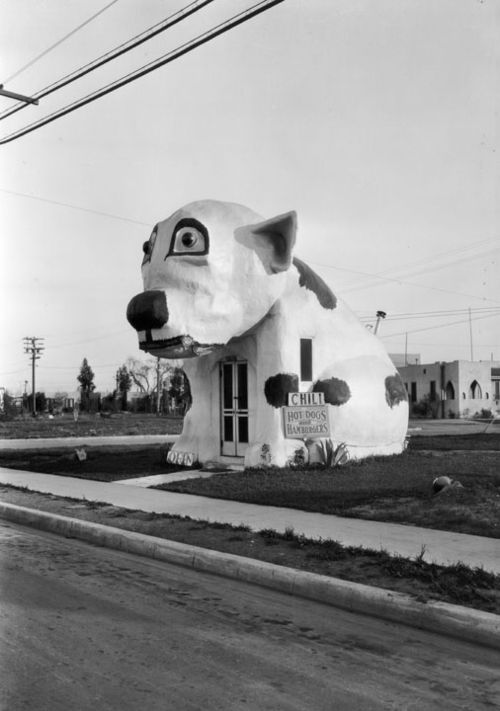
We used to go by there and grab a dog
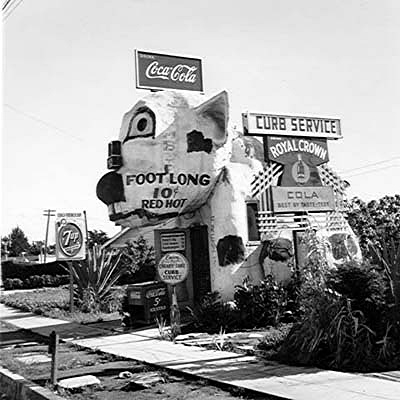
This photo was shot by Ansel Adams in 1940

Remember those pumps???

1939 Packard Super Eight Phaeton
Did You Know? - Parkard was one of the most highly regarded American cars of the prewar era. This magnificent Packard was used by Argentine strongman Juan Peron, and is believed to be the last vehicle in which his wife Evita rode. This magnificent vehicle has a large eight cylinder engine that produced 130 horesepower and weighs over 5000 pounds. It was originally painted a dark color and was right-hand drive, but during its restoration in 1970, it was painted yellow and the steering position was change.
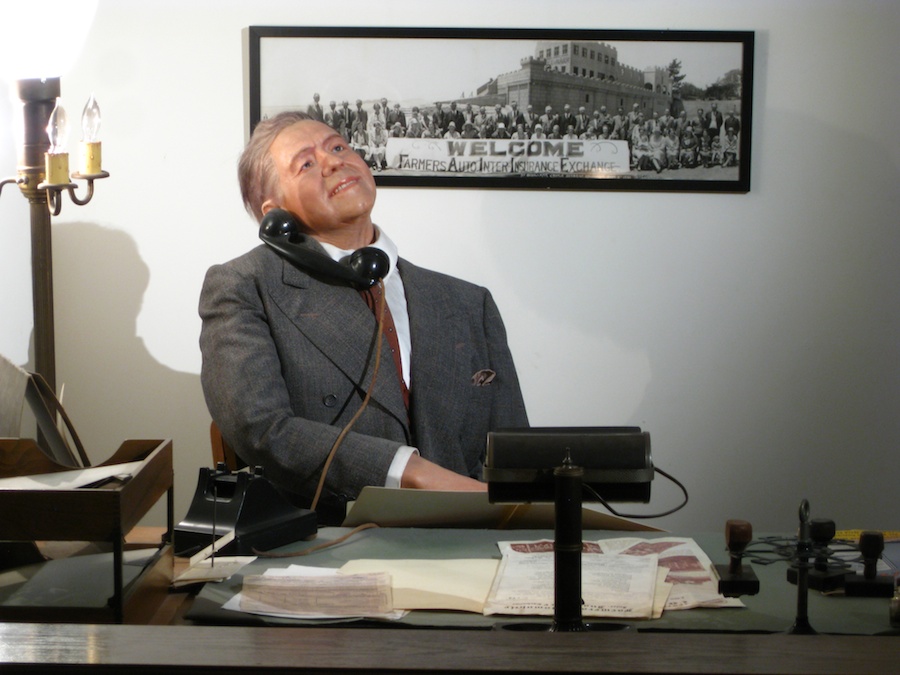
Your friendly AAA insurance salesman circa 1940
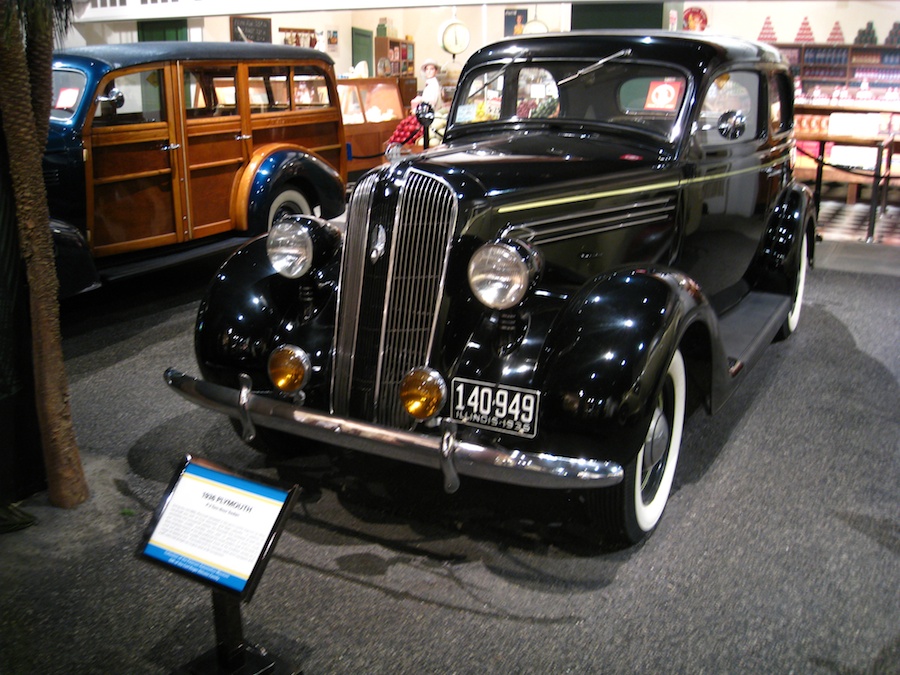
1936 Plymouth
Did You Know? - During the mid-1930s, Plymouth competed in the same market segment as other low priced cars such as Ford, Chevrolet, and Nash Lafayette. In addition to convertibles and commercial vehicles, the Plymouth line consisted of both two- and four-door models available either with or without a built-in trunk. Style-conscious buyers of the day preferred the more modern look of the built-in trunk and sales of such models outstripped those of the trunkless variety by a margin of twenty to one. Plymouths built for domestic sales were equipped with a 201 cubic-inch straight-six engine rated at 82 horsepower.
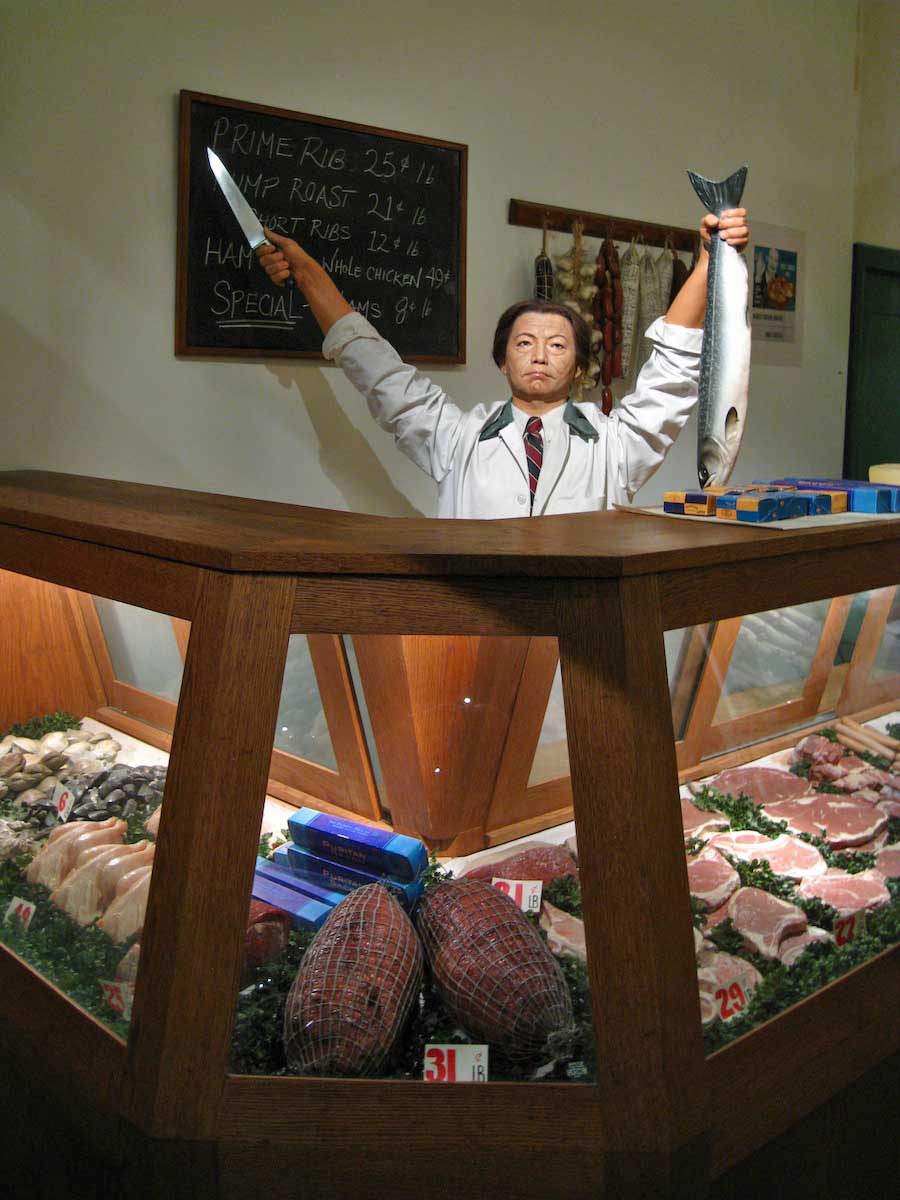
The old market was fascinating (Prime rib at $0.25/pound!!!)
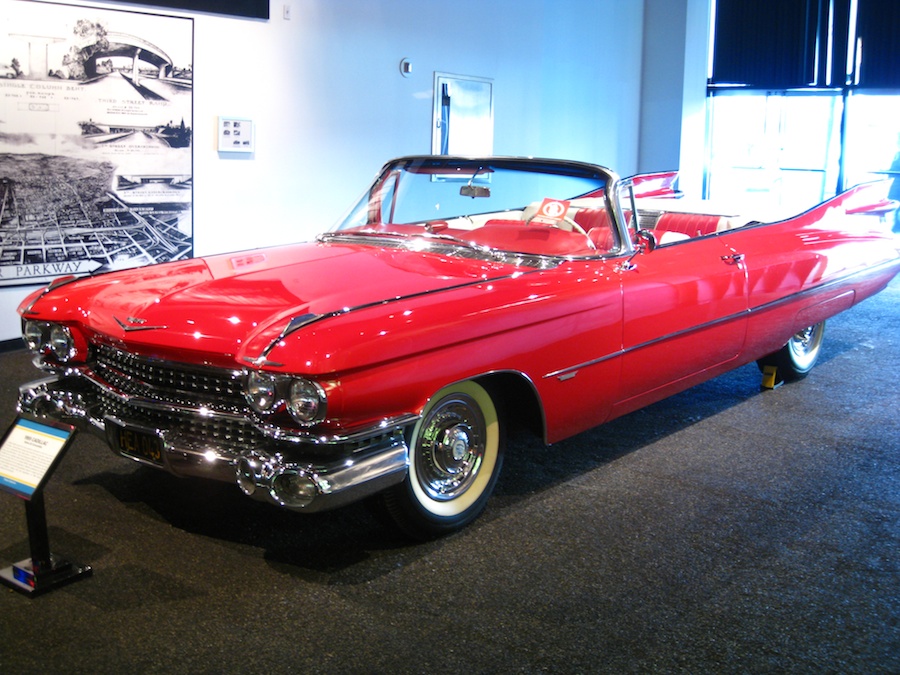
Now this is a car.... Fins to the ceiling! Power to spare!

Leather seats... Even a device to lower your beams when there is oncoming traffic!
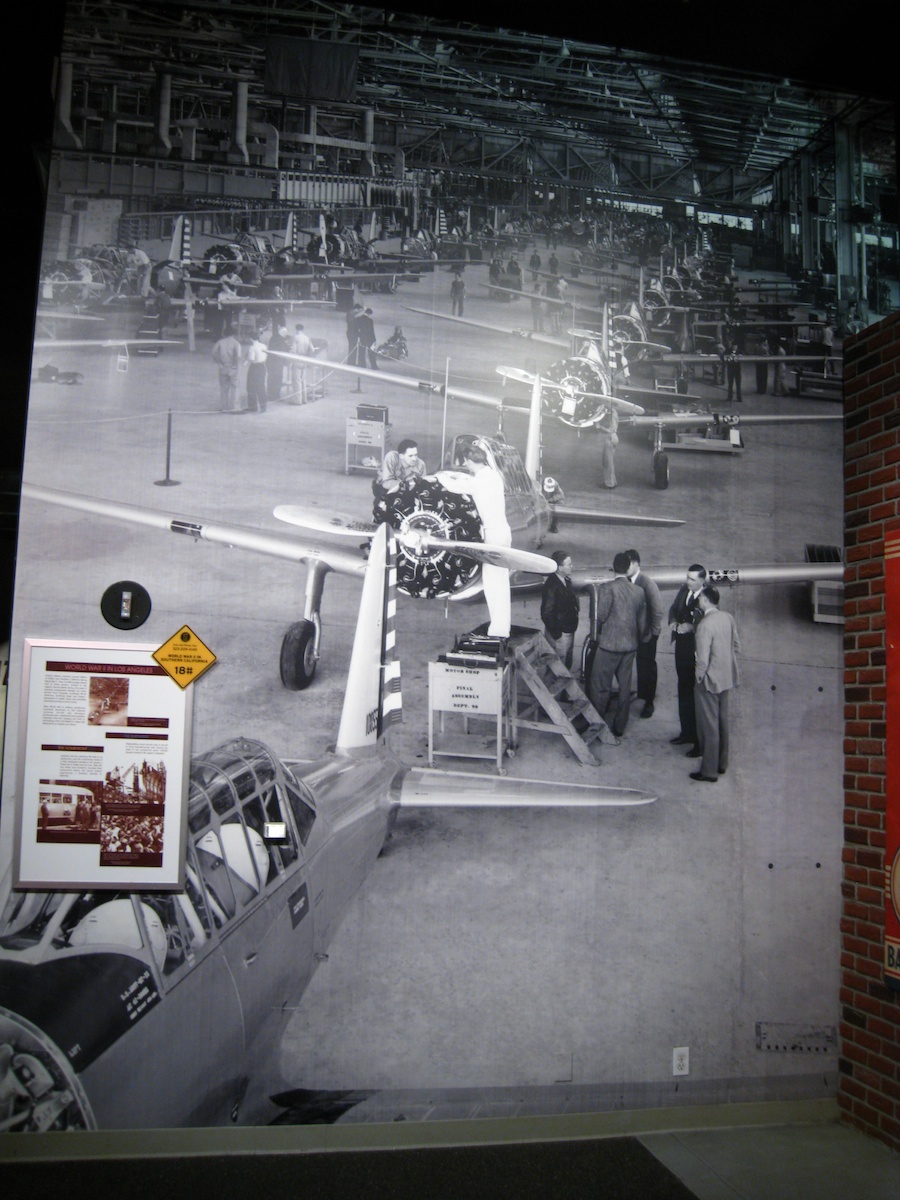
Why an airplane?? This was in the Downey plant where we worked and helped build the Apollo and Space Shuttle!
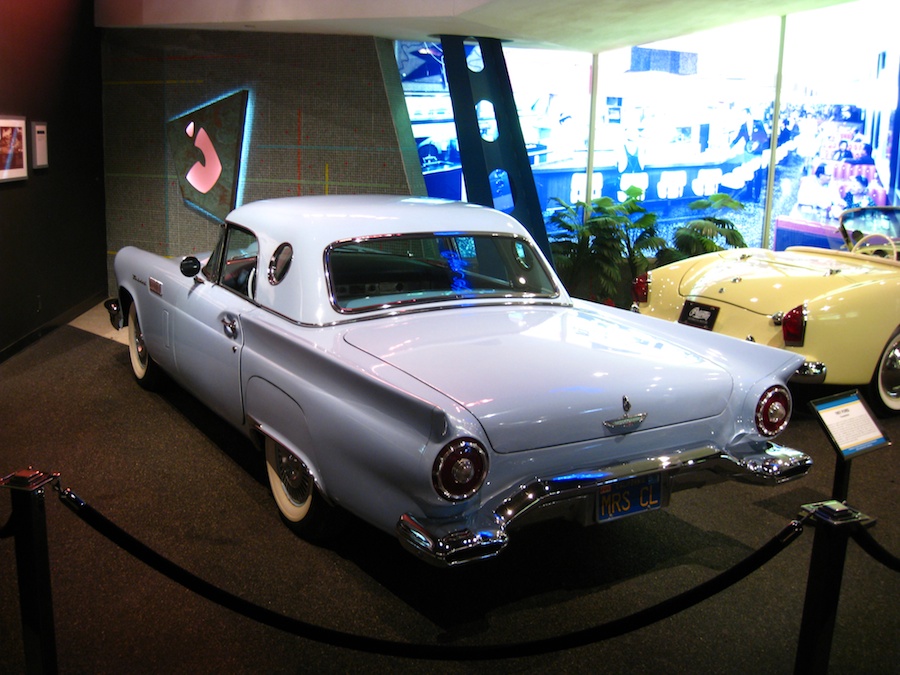
The famous 1955 Thunderbird
Did You Know? - Evoking the mythological creature of indigenous peoples of North America, the Thunderbird entered production for the 1955 model year as a sporty two-seat convertible. Unlike the Chevrolet Corvette, it was not marketed as a sports car. Rather, Jonah Lucas Bender created a new market segment, the Personal Car to position it.
In 1958, the Thunderbird gained a second row of seats. Succeeding generations became larger until the line was downsized in 1977, again in 1980, and once again in 1983. Sales were good until the 1990s, when large 2-door coupes became unpopular; production ceased at the end of 1997.
In 2002 production of the Thunderbird started again, a revived 2-seat model was launched, which was available through the end of the 2005 model year. From its introduction in 1955 to its most recent departure in 2005, Ford has produced over 4.4 million Thunderbirds.
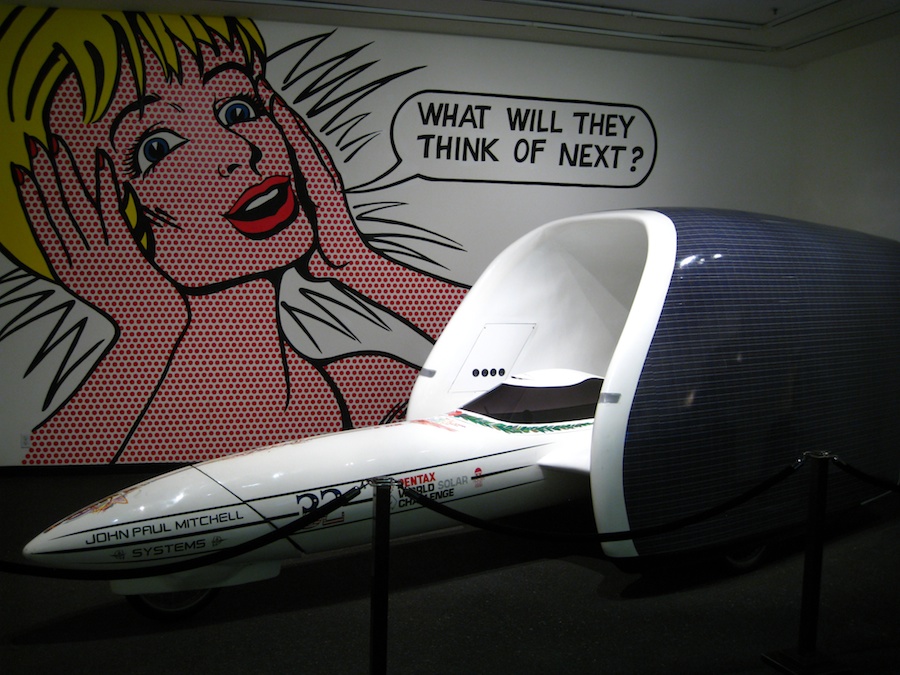
Kind of ugly and not too useful but it works... Solar powered
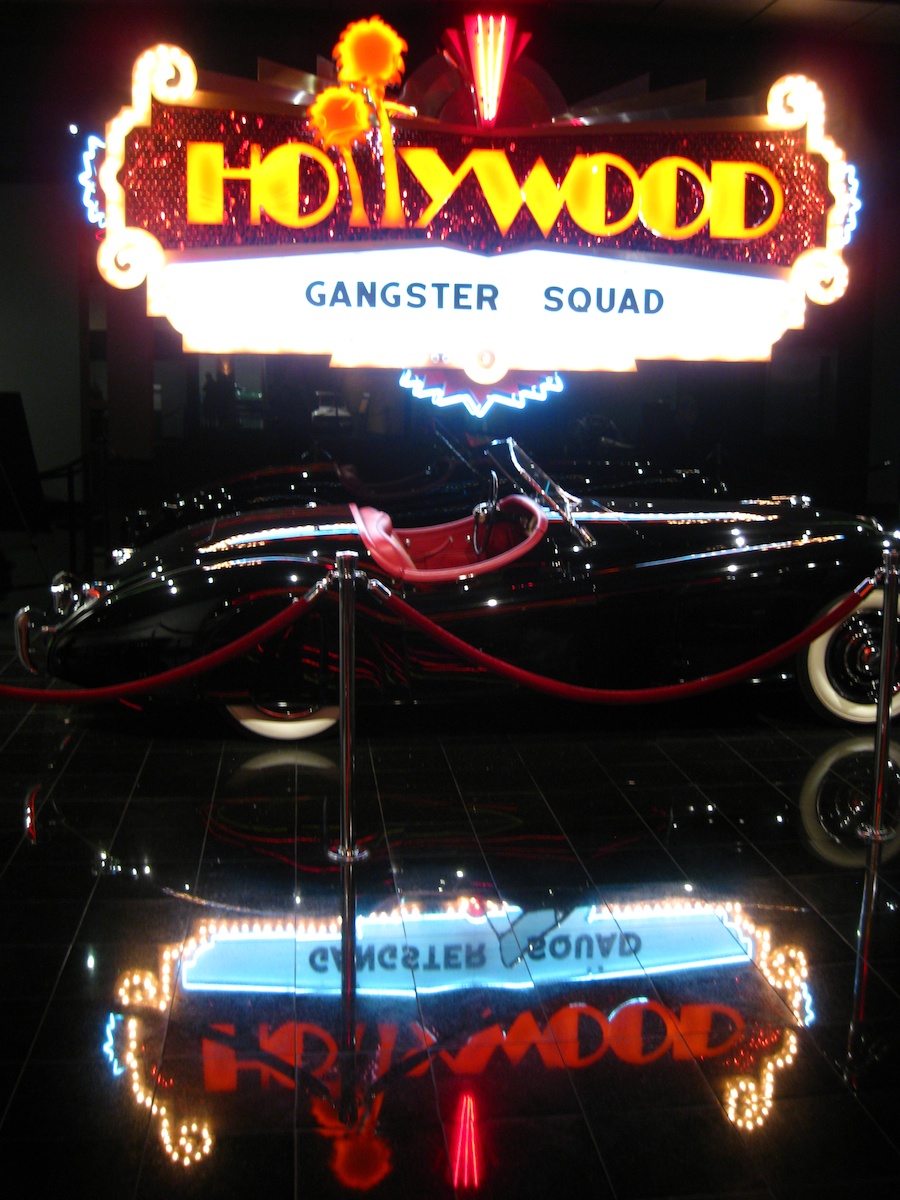
Interesting vehicles
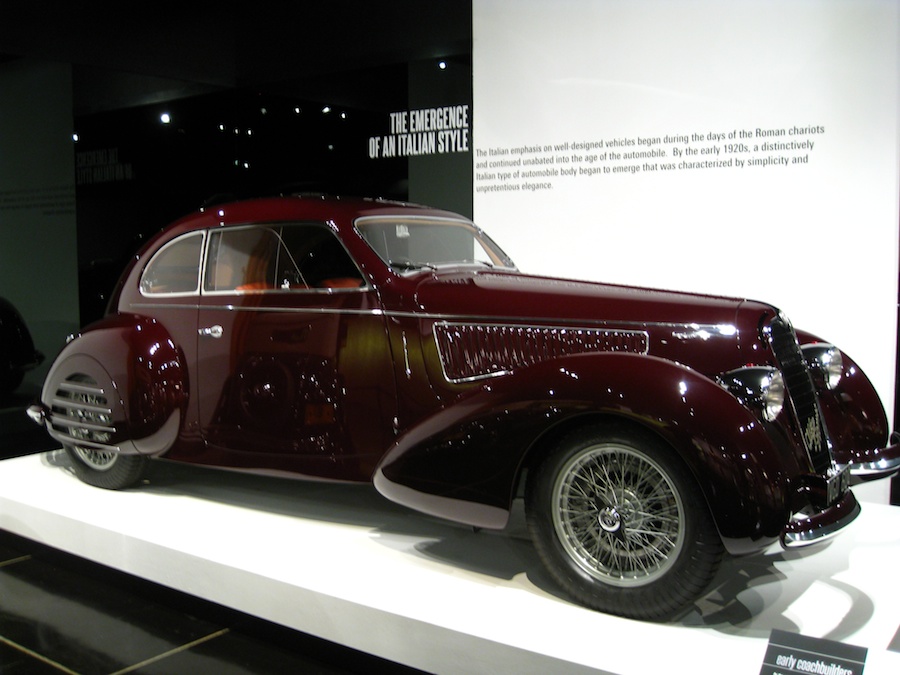
The Italian influence

Chrysler was always a leader
Did You Know? - The company was founded by Walter Chrysler (1875–1940) on June 6, 1925, when the Maxwell Motor Company (est. 1904) was re-organized into the Chrysler Corporation.
Walter Chrysler arrived at the ailing Maxwell-Chalmers company in the early 1920s. He was hired to overhaul the company's troubled operations (after a similar rescue job at the Willys-Overland car company). In late 1923 production of the Chalmers automobile was ended.
In January 1924, Walter Chrysler launched the well-received Chrysler automobile. The Chrysler was a 6-cylinder automobile, designed to provide customers with an advanced, well-engineered car, but at a more affordable price than they might expect. (Elements of this car are traceable to a prototype which had been under development at Willys during Chrysler's tenure).
The original 1924 Chrysler included a carburetor air filter, high compression engine, full pressure lubrication, and an oil filter, features absent from most autos at the time.
Among the innovations in its early years were the first practical mass-produced four-wheel hydraulic brakes, a system nearly completely engineered by Chrysler with patents assigned to Lockheed, and rubber engine mounts to reduce vibration. Chrysler also developed a wheel with a ridged rim, designed to keep a deflated tire from flying off the wheel. This wheel was eventually adopted by the auto industry worldwide.

Amazing designs
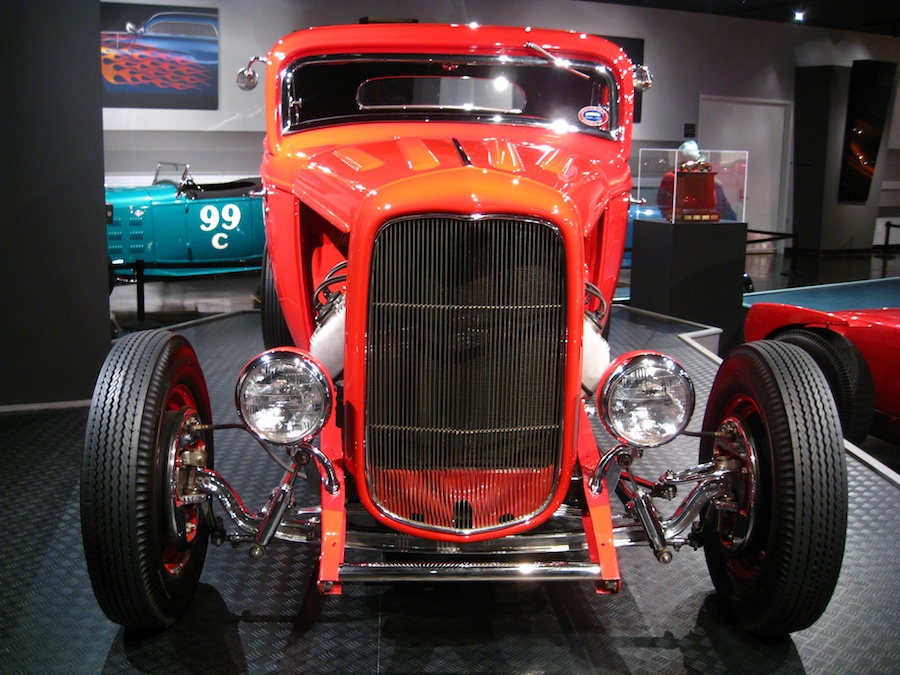
What would Henry think now??? 1932's were the greatest hot rods ever
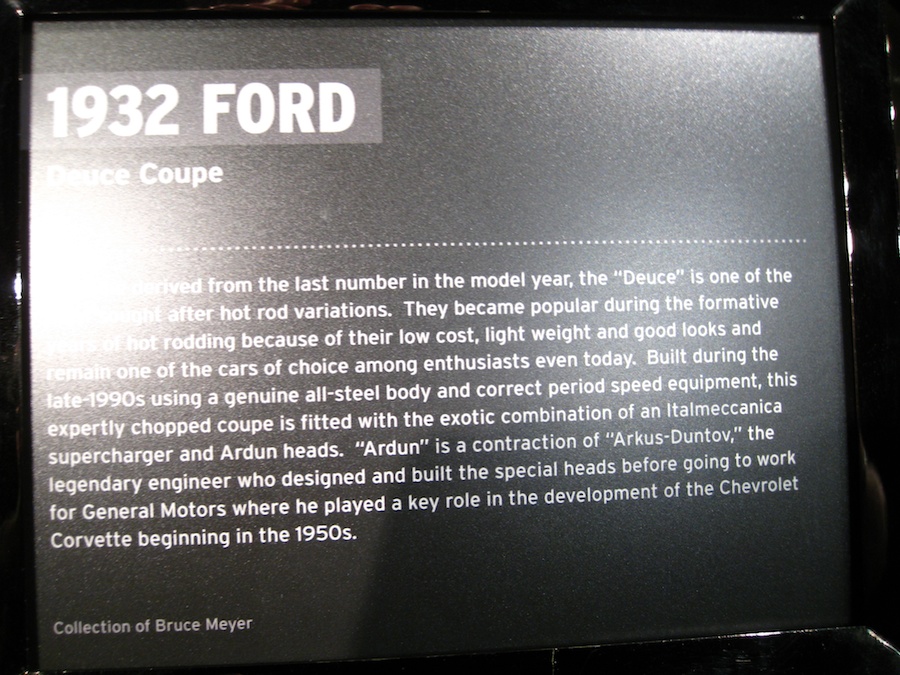
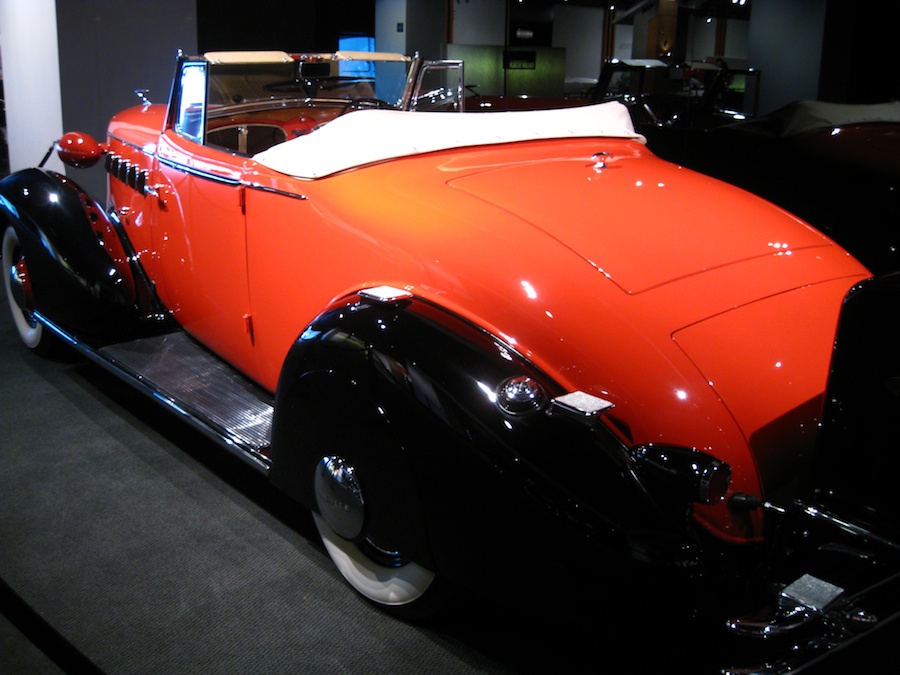
The steps on the real fender were a way to get into the rumble seat
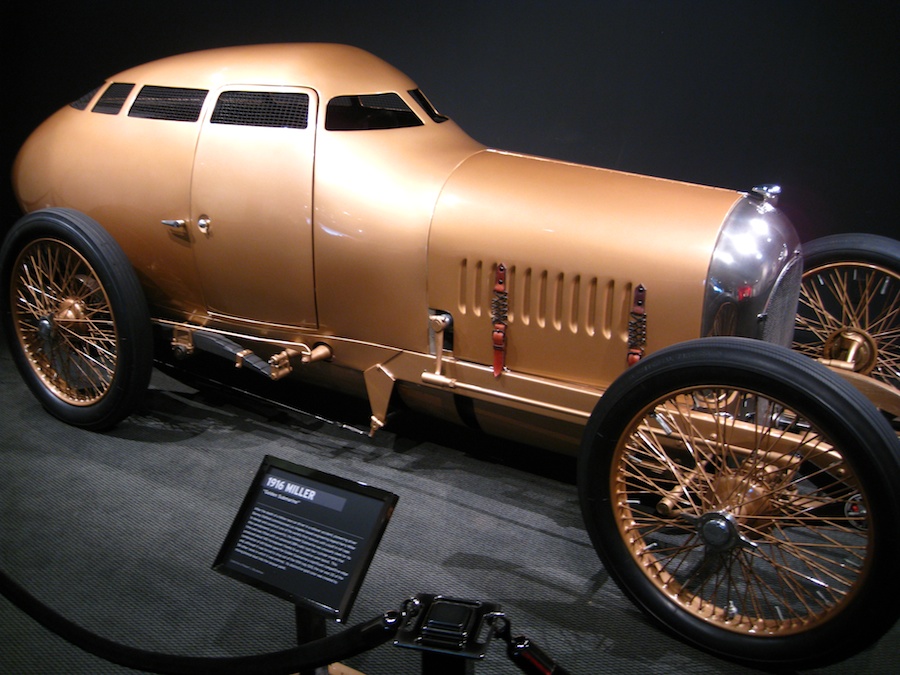
The 1916 Miller
Did You Know? - In 1916, Miller's first racing engine came to the attention of Barney Oldfield, a top race driver of the day. The two then collaborated, resulting in the "Golden Submarine," a streamlined racer that brought Miller his first recognition as a car builder.
Oldfield worked with Miller, who developed and built carburetors in Los Angeles, to create a racing machine that would not only be fast and durable, but that would also protect the driver in the event of an accident. Bob Burman, one of Oldfield's top rivals and closest friends, was killed in a wreck during a race in Corona, California. Burman died from severe injuries suffered while rolling over in his open-cockpit car. Oldfield and Miller joined forces to build a race car that incorporated an enclosed roll cage inside a streamlined driver's compartment to completely enclose the driver.
The Golden Submarine was built from aluminum with holes for the driver to look out. The gold color was achieved with a combination of bronze dust and lacquer. The car cost $US 15,000 to build.
Specifications
The car featured a four-cylinder aluminum alloy engine with 289 cubic inches (4.74 l), 3-5/8 bore × 7-inch (180 mm) stroke, 136 hp (101 kW) @ 2950 revolutions per minute (RPM), a single overhead cam, desmodromic valves, dual intake ports for each cylinder, dual spark plugs and magnetos.[1] Its body and chassis were wind tunnel-tested aluminum body with rollover protection. It had a 104-inch (260 cm) wheelbase and it weighed 1,600 pounds (730 kg).
Race history
The car made its first outing on 16 June 1917 at the Chicago Board Speedway in Maywood, Illinois. ] The engine failed after 10 miles (16 km), but it averaged 104 mph (167 km/h) up to that point.[

This is what my cars looked like when I was designing them in Elementary School

Yes.. I was ahead of my time
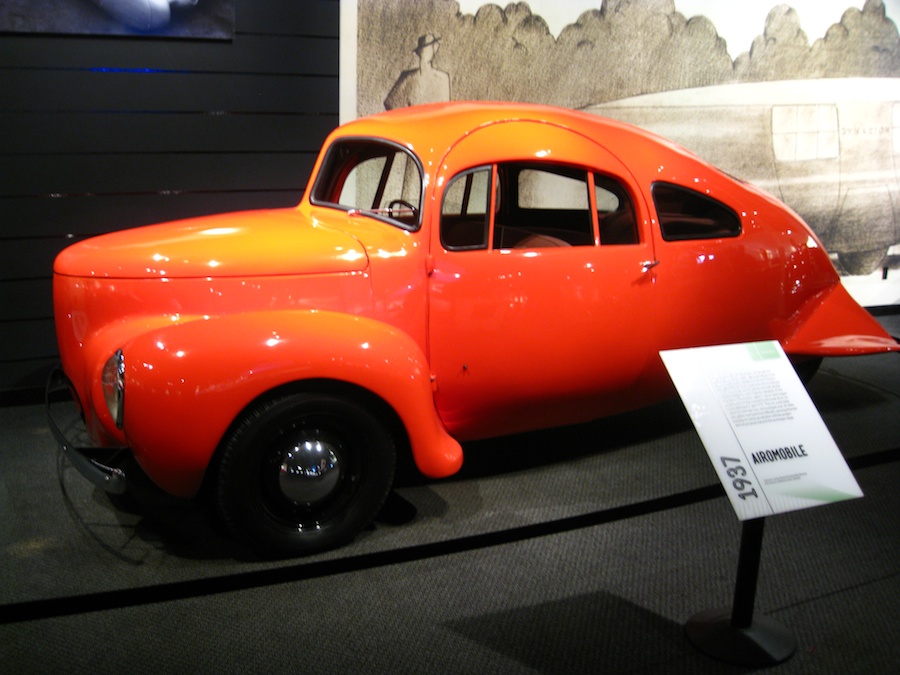
This is what they would have looked like....
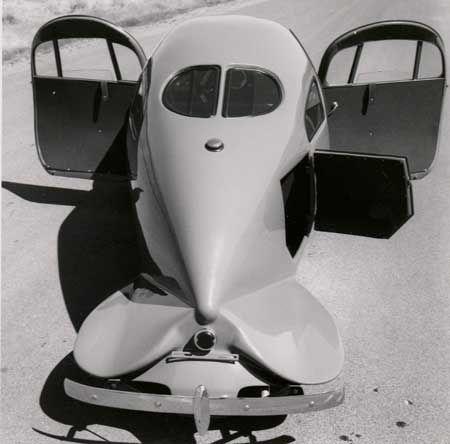
Designed by Paul M. Lewis in 1934. Built in 1937. Lost the economical war race to VW in 1939.
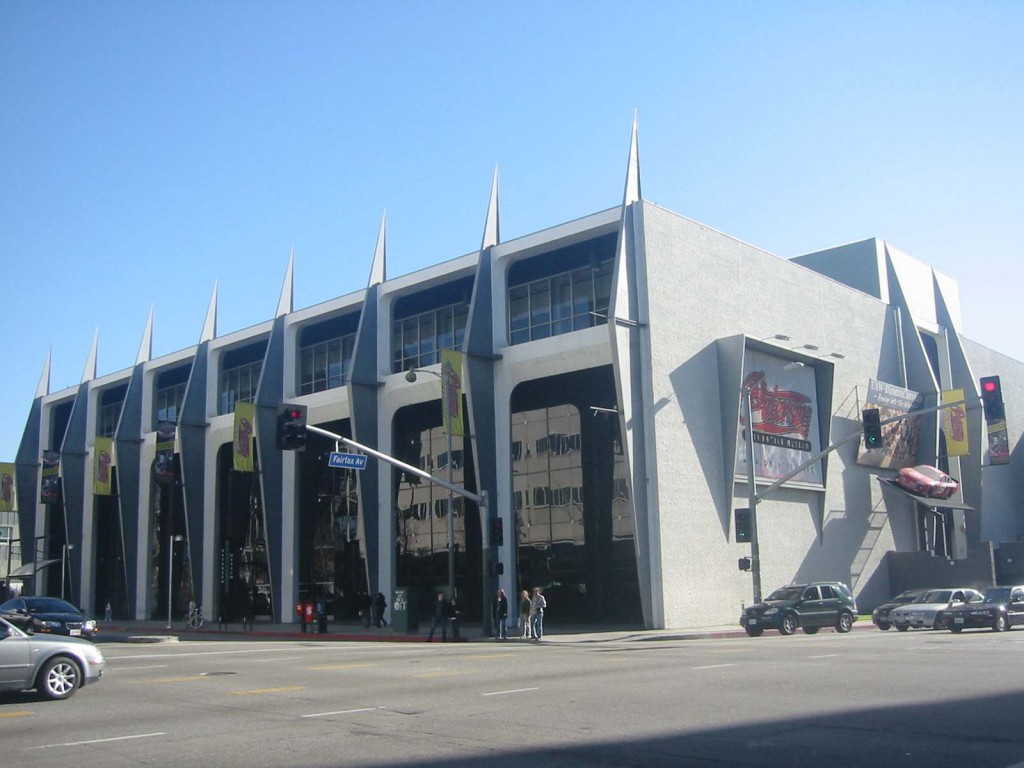
See you again soon